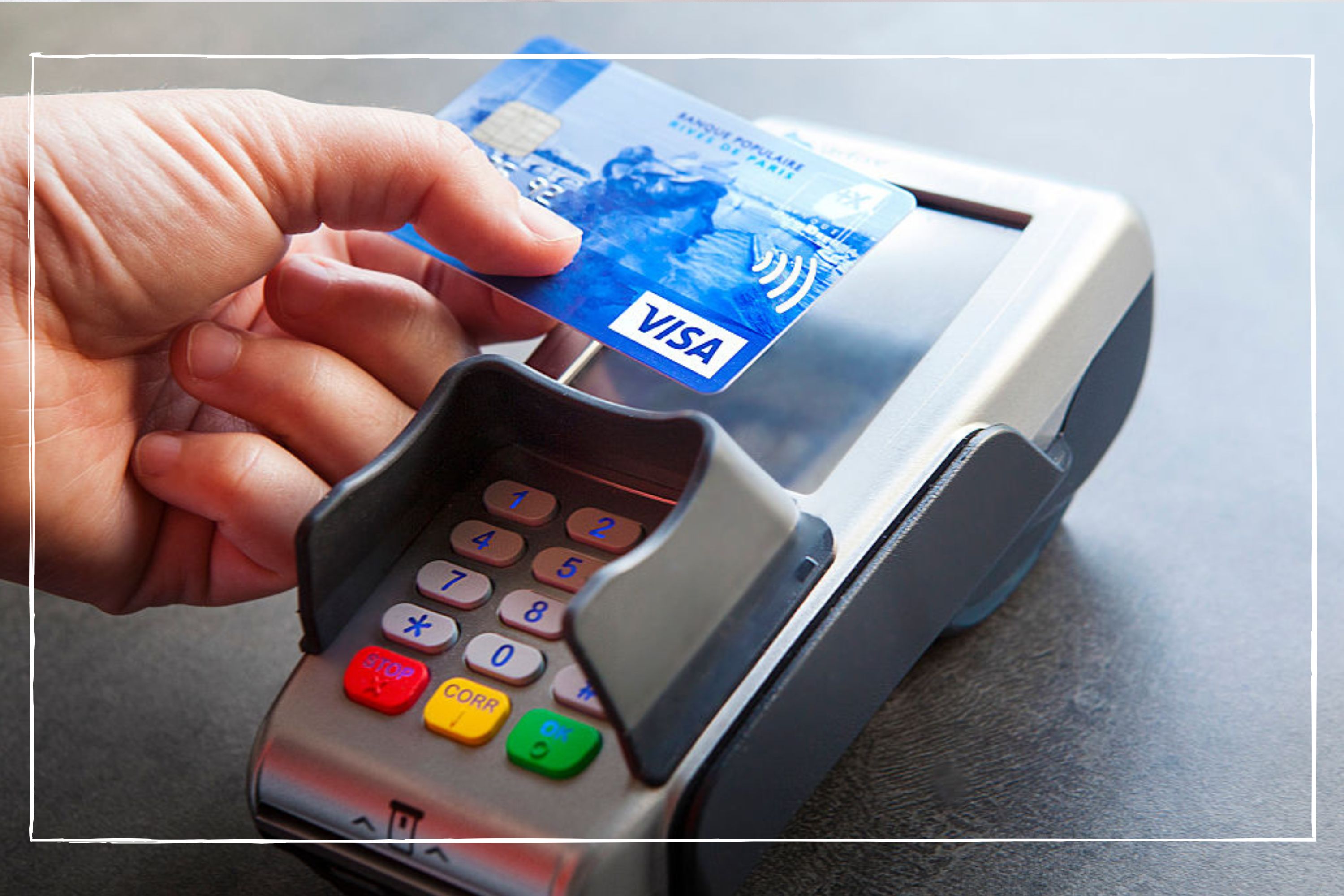What does APR mean and how does it work when it comes to borrowing money?
If you've been wondering what does APR mean, this guide explains all you need to know before you apply for a loan or credit card


You might have been wondering what does APR mean if you've been looking to take out a new loan or credit card, or if you are looking to pay off debt.
The APR gives you the total cost of borrowing over a year and it can have a big impact on your finances. This makes understanding how the APR works even more crucial at a time when interest rates are going up to combat soaring inflation. (If you're not sure how interest rates work, check out our 'What are interest rates?' guide for a quick explainer.) Our how do credit cards work article will also help you to understand how APR fits into credit card spending.
Holly Andrews, managing director at KIS Finance told us: “There seems to be no end in sight to the increasing cost of goods and services, and interest rates are also rising at an alarming rate with even more rises predicted over the next 12 months.
"With more people than ever turning to credit cards and loans to cover day to day living costs, it’s so important to understand the terminology used for financial products so you know exactly what you’re getting yourself into and what it will cost you.”
What does APR mean?
APR means Annual Percentage Rate. It is the official interest rate used for borrowing on a credit-based product such as a personal loan or credit card. The APR gives borrowers a better idea of how much their debt will cost them over the course of a year, taking into account both the interest rate they’ll pay, as well as any additional charges.
For example, if you borrow £1,000 for a year and the APR is 5%, you will need to repay £1,050 in total, which is the original £1,000 you borrowed, plus 5% of the amount you borrowed, which is £50.
The APR is expressed as a percentage of the amount you’ve borrowed and it’s designed to make it easier to compare different credit cards or loans. However, borrowers should keep in mind that the APR will only factor in compulsory charges - avoidable fees, such as those for late payments, will not be included.
Parenting advice, hot topics, best buys and family finance tips delivered straight to your inbox.
Personal finance expert at Forbes Advisor, Laura Howard says: “An APR is much more than a number on a credit agreement. It’s the amount in cold, hard 'pounds and pence' you will pay to the provider for any debt you owe.”
As well as APR, you might also come across some other types of interest when looking at things like mortgages, credit cards, loans and savings accounts. These could include:
- Representative APR or rep APR
- AER
- APRC.
What does it mean when an APR is representative?
The representative APR is the rate that lenders must offer to at least 51% of successful applicants for a particular credit card or loan. This means the remaining 49% of applicants may not be eligible for the advertised APR and are likely to be offered a higher rate instead.
For example, if a credit card is advertised with 19% representative APR, just over half of those who are accepted must be given that rate. The other 49% don't have to be given that rate and will most likely offered a higher rate of APR.
The exact rate you’re offered by the lender, or your “personal APR”, will depend on your personal and financial circumstances. Brean Horne, personal finance expert at Nerdwallet, told us: “There are a number of factors that could affect the APR you are given by a lender such as your credit score, how much you want to borrow, and how long you want to borrow it for. Having a good credit score will help you find a better APR rate as lenders could consider you a lower risk and more likely to pay back what you’ve borrowed.”
What’s the difference between APR and AER?
While the APR shows the total annual cost of borrowing money, the AER is used to illustrate the amount of interest you will earn on a savings account in a year. The AER stands for Annual Equivalent Rate and takes into account compound interest (where you earn interest on the money you’ve saved as well as the interest earned), plus bonuses and any charges.
What does APRC mean?
You might also come across APRC which stands for Annual Percentage Rate of Charge. This applies to mortgages and secured loans (a secured loan is one where if you don't keep up with repayments, your home could be at risk as it has been used as 'security' for your loan).
It effectively gives you an average annual interest rate for the entire length of the loan or mortgage until it is repaid.
“The APRC is similar to APR but is specifically used to show the total cost per year of mortgages and secured loans,” says financial journalist Brean Horne. “The APRC takes into consideration that the interest rate may change during the term and is calculated assuming you will keep the mortgage or secured loan for the full term.”
What’s a good rate of APR?
A good rate of APR is generally a low one - or at least one that’s below the market average. The lower the APR, the less it will cost you to borrow.
Holly Andrews from KIS Finance says: “As a few examples, a good APR for a secured loan would be around 4% if you have a good credit history. If you have adverse credit, you can expect an APR of somewhere between 6% and 7%. If you start getting rates offered around the 10% mark or higher then you need to consider carefully how much you genuinely need the loan and whether you can afford the repayments.”
Meanwhile, some of the lowest credit card APRs sit around the 8.9% mark, but if your credit score is poor, you could expect to pay a higher rate in the region of 30% to 35% APR. “This means paying a staggering £350 a year on £1,000 of card debt, while most of any monthly repayments you make will go towards paying the interest rather than your actual debt,” warns Forbes Advisor's Laura Howard.
Note that credit cards that offer rewards such as cashback on purchases or the opportunity to earn air miles can also charge particularly high APRs - as high as 103% in some cases. If you’re planning to use one of these cards, it’s crucial that you pay off your balance in full each month so that you don’t pay interest. If you don’t, the amount of interest you pay will far outweigh any of the benefits on offer.
Is there a way to avoid APR charges?
The best way to avoid paying APR charges on a credit card is to make use of any 0% promotional offers, for example on new purchases or balance transfers. Make sure you pay off your balance in full before the interest-free offer expires.
Personal finance expert Laura Howard adds: “If your card does not offer any promotional 0% period, set up a direct debit to clear your full balance every month. This is a reliable way to ensure you don’t rack up any interest-bearing debt. Most card providers generally allow up to 56 days before applying interest but it’s best to clear debt monthly regardless if you can afford to.”
Loans do not offer 0% promotional deals, but you can keep the interest rate to a minimum by shopping around and looking for the lowest APR for the amount you want to borrow.
Using an eligibility checker (which many providers and comparison sites offer) will also show you which loans or credit cards you’re most likely to get accepted for, as well as the APR you’re likely to be offered, and it won’t affect your credit score.
Check out these eligibility checkers from our sister brand GoCompare:

Mum of two, Rachel is a freelance personal finance journalist who has been writing about everything from mortgages to car insurance for over a decade. Having previously worked at Shares Magazine, where she specialised in small-cap stocks, Rachel developed a passion for consumer finance and saving money when she moved to lovemoney.com. She later spent more than 8 years as an editor at price comparison site MoneySuperMarket, often acting as spokesperson. Rachel went freelance in 2020, just as the pandemic hit, and has since written for numerous websites and national newspapers, including The Mail on Sunday, The Observer, The Sun and Forbes. She is passionate about helping families become more confident with their finances, giving them the tools they need to take control of their money and make savings. In her spare time, Rachel is a keen traveller and baker.